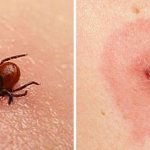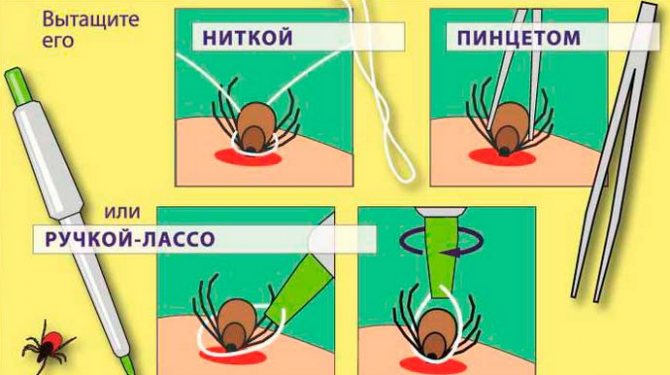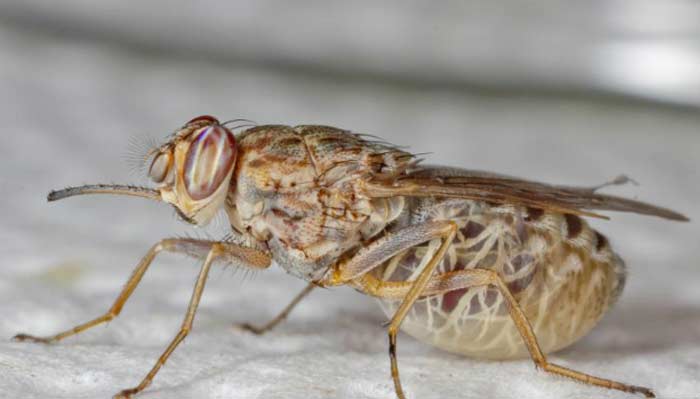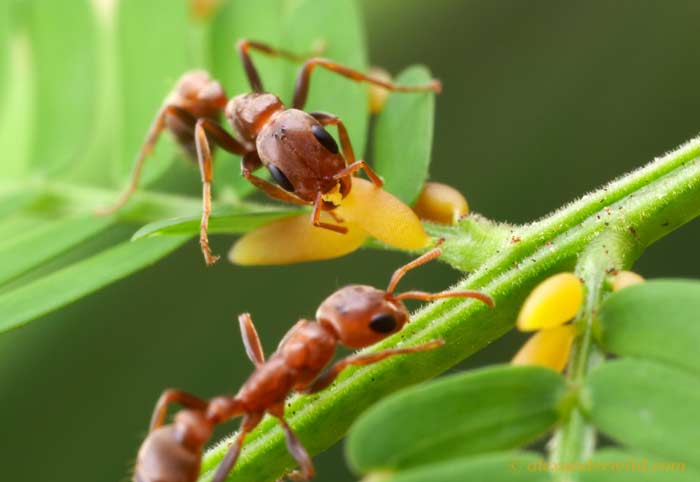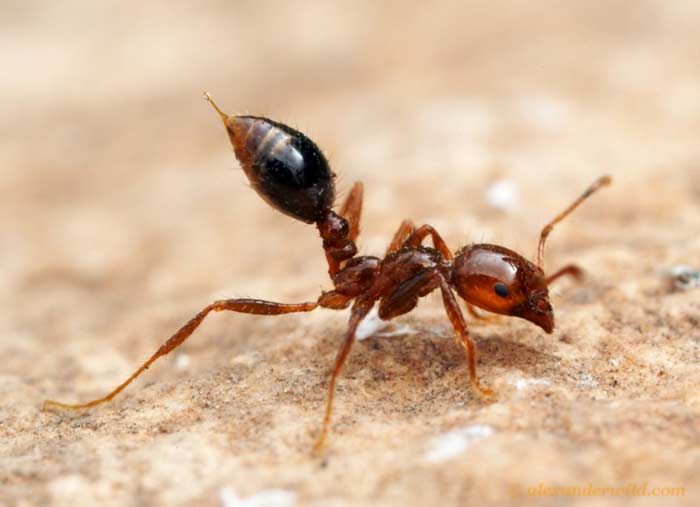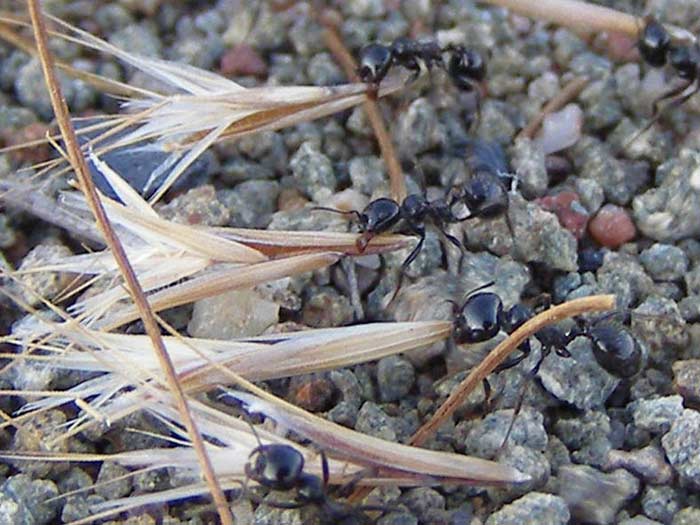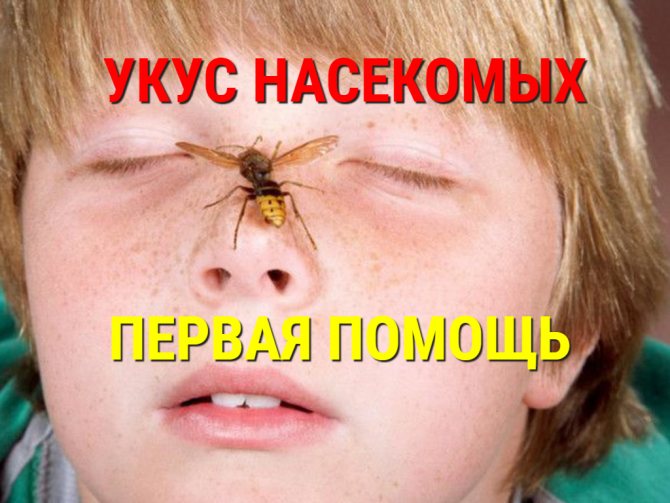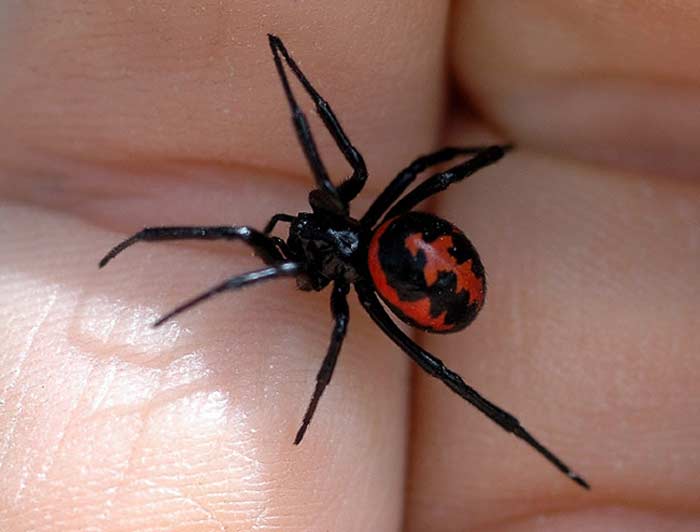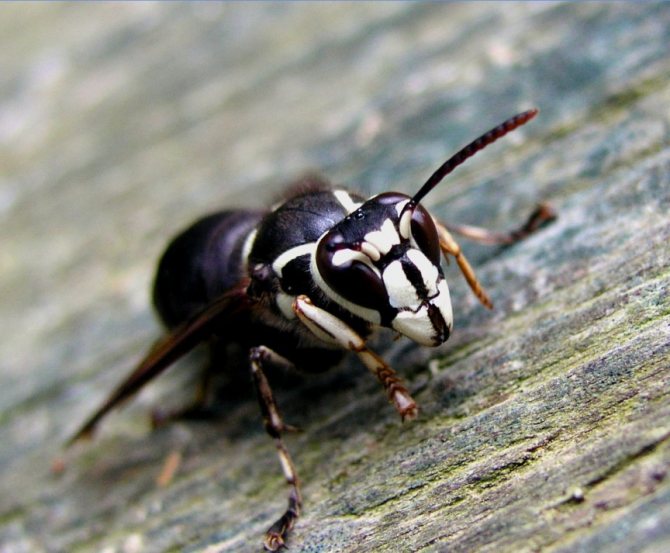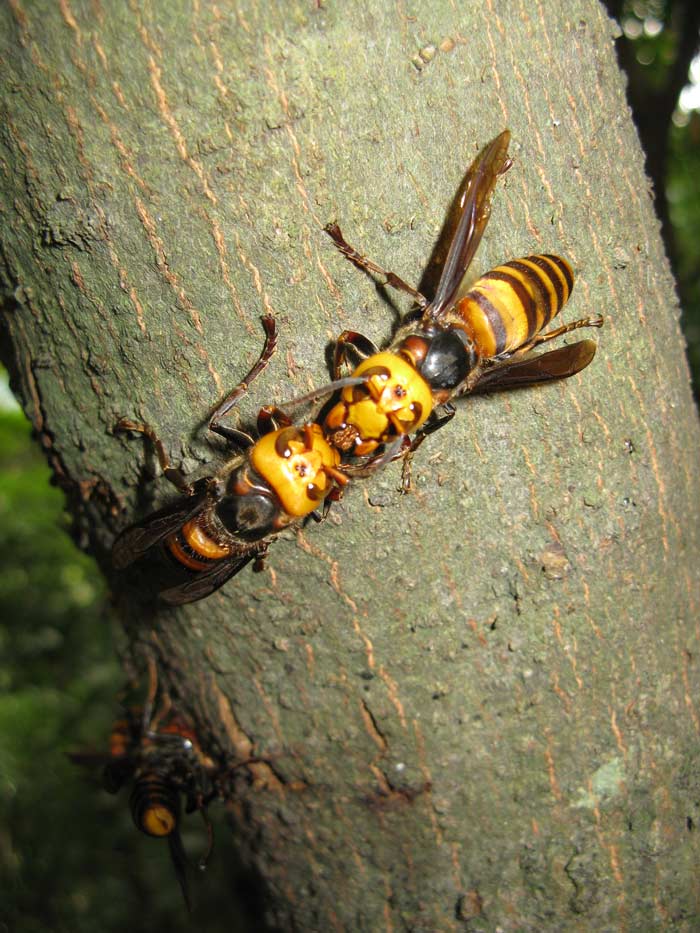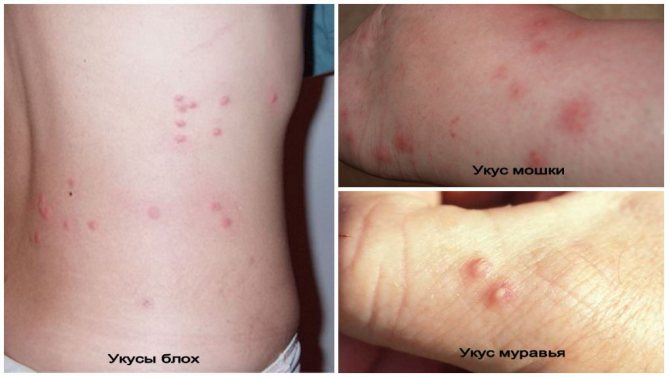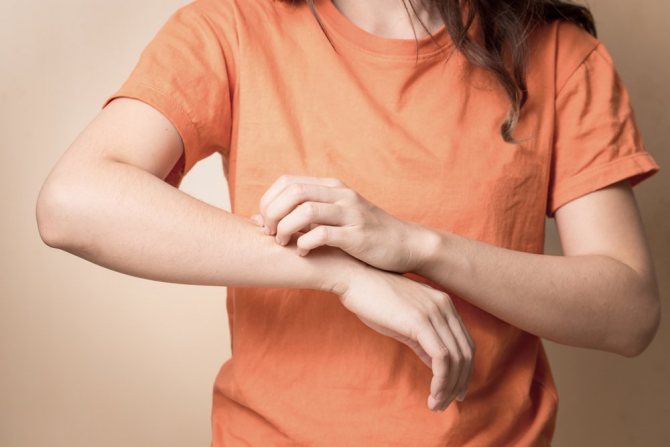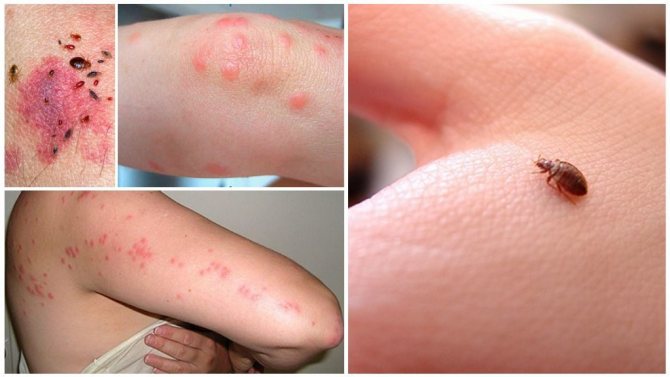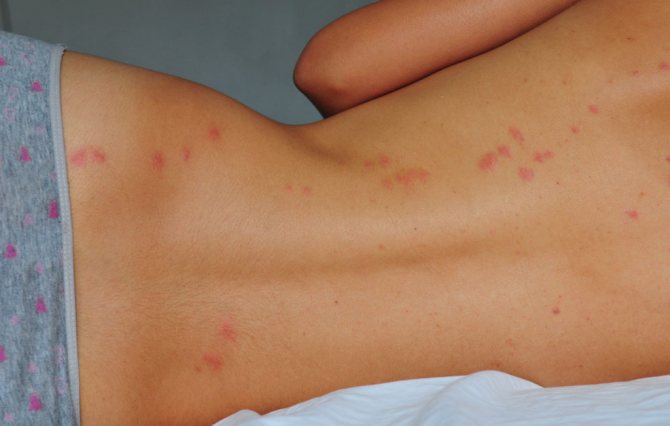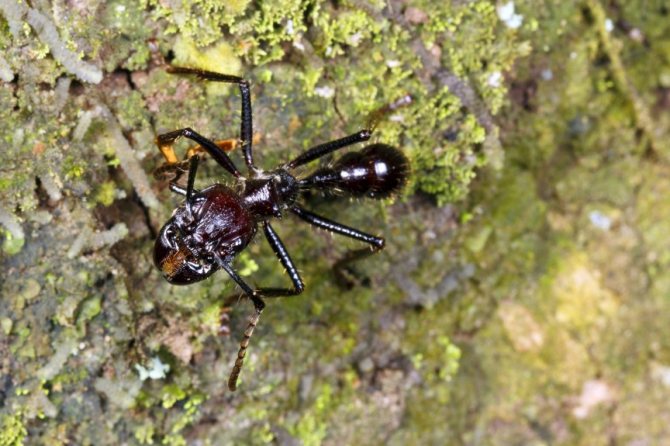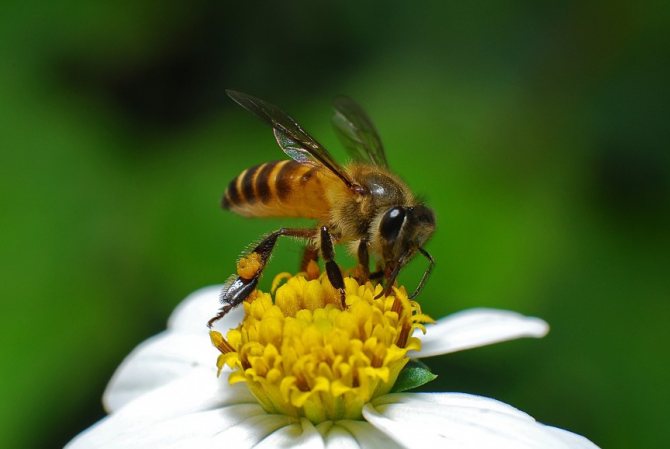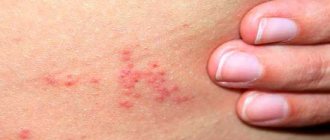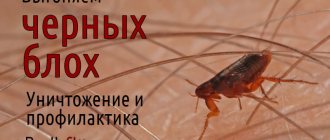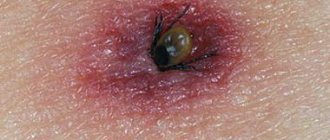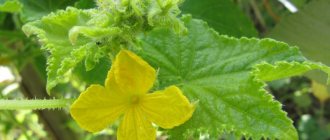Which insect has bitten you?
The sooner you know which insect has attacked you, the better you will know what action to take.
Another reason it's important to know who bit you is because some of these pests can transmit life-threatening infections.
Mites
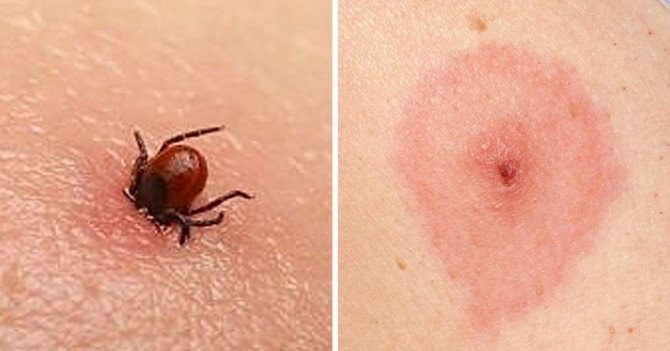
Tick bite on the skin
The greatest danger to humans is represented by forest ticks, which carry dangerous diseases. The device of the mouth apparatus allows the tick to deeply and firmly adhere to the skin without causing pain to the victim, so a person often finds a parasite on his body only the next day or a few days later, or even does not even notice a bite or a parasite at all.
If it so happens that the tick bites you and falls off, the bite site looks like a red spot that spreads a few centimeters around a black or red dot. Check if there are any tick particles left at the site of the bite and run to the doctor.
Mosquitoes
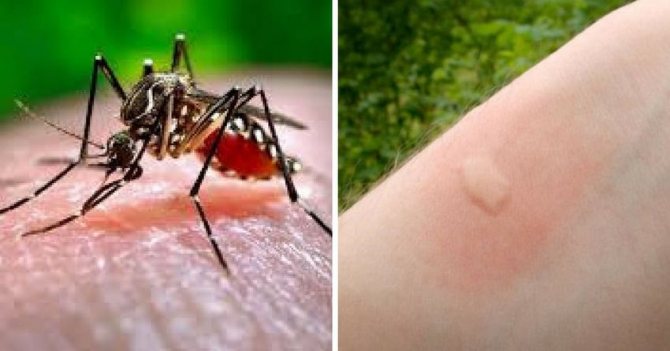

Mosquito bite on the skin
A mosquito bite looks like pink papules on the skin in the shape of a circle or a drop. If you comb the bite, it will become more irritated and take on a darker shade of red as the mosquito saliva will spread into the surrounding tissues and the reaction will only intensify.
Sometimes an allergic reaction occurs at the site of the bite, accompanied by edema.
Wasps
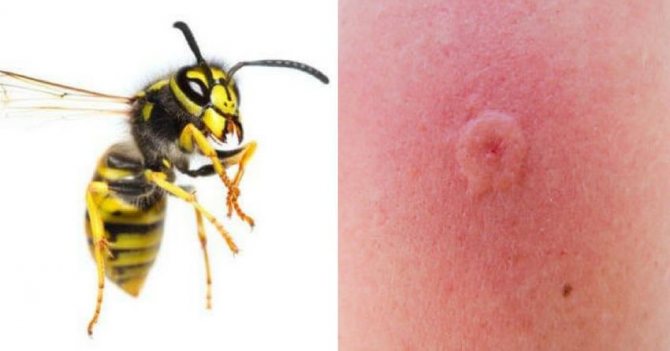

Wasp sting on the skin
The bite of a wasp cannot be overlooked, but you can overlook the wasp itself. A strong burning sensation and pain occurs at the site of the bite, it swells and turns red. In some cases, the bite causes a rash all over the body, headache, fever, and even nausea.
Bees
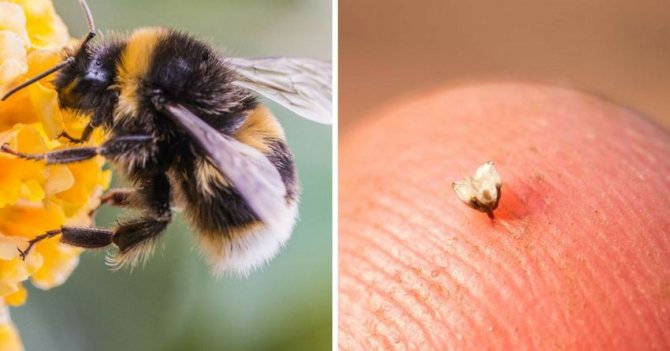

Bee sting on the skin
The bee dies by stinging a person, as it leaves its stomach and digestive tract along with the sting. Therefore, their bites are easy to recognize. Remove the sting from your body immediately to prevent poison from entering your bloodstream. A bee sting is on the second place of the causes of anaphylaxis, so if shortness of breath appears, pressure drops, breathing is disturbed, call an ambulance.


How to protect yourself from bites?
Cover up
While it's not a good idea to wear long sleeves and trousers in hot weather, clothing is the best protection against insect bites. Whenever you are outdoors for an extended period of time, wear long clothes and closed-toed shoes.
Sleep under the net
If you enjoy hiking, next time cover your tent or hammock with an insect net so that no flying creature interrupts your sleep.
Apply insect repellent
Apply an all-natural insect repellent. It is inexpensive and ensures that no insect dares to bite you.
Examine your body
Every time you come back from a walk in nature, check your body for tick bites.
You may not feel the bite, so you should definitely consider every part of the body. If you find a tick, put on gloves and carefully remove it with tweezers.
Use straws
Use straws for canned drinks as they provide almost 100% protection from dangerous insect bites in the mouth.
Interesting facts about the iron
21/02/2020
Hornets
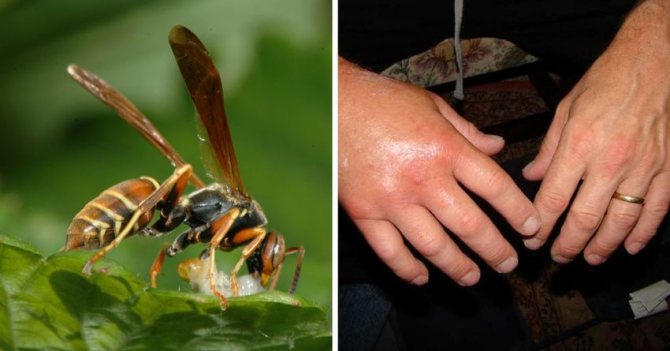

Hornet bite on the skin
The hornet pierce the skin like an ordinary bee, but does not leave a sting in the wound. A sharp pain occurs at the site of the bite, it swells and turns red. A person's pulse quickens, nausea and bouts of vomiting appear, the limbs get cold, and the lips, neck and ears can take on a bluish tint. Loss of consciousness is possible.
Young children and adults with weakened immunity are especially poorly tolerated by the hornet bite. If allergy symptoms appear, you need to see a doctor very quickly.
Fleas
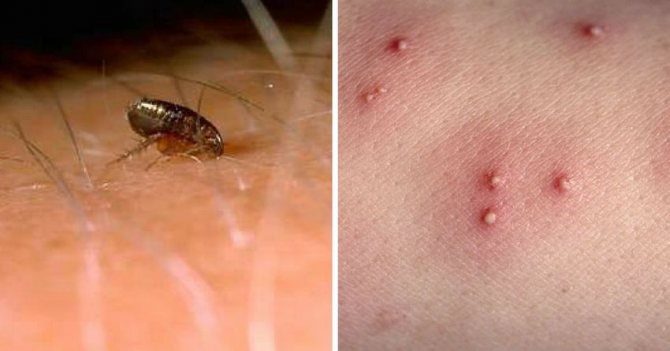

Flea bite on the skin
Flea bites are most often found on the legs. Why are they easy to identify? Because the flea usually bites several times.
Their bites appear as small, red dots on the skin. But if you comb them, they will heal for a very long time, and after them dark spots will remain for a long time.
Red ants
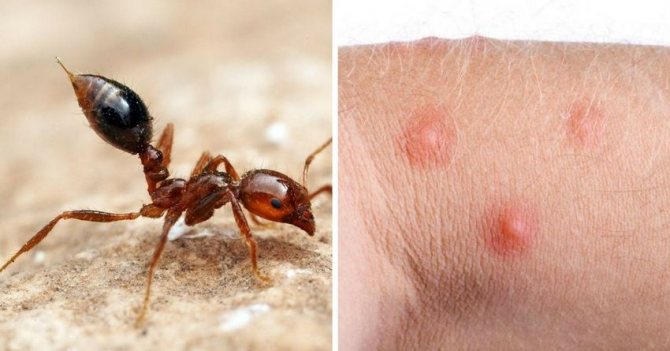

Ginger ant bite on skin
If you see a ginger ant, shake it off immediately! When biting, it releases a toxin that can cause an allergic reaction.
The damaged area will look pink and similar to flea bites, but the difference is that the ant sting causes instant, severe pain that will bother you for a long time.
Lice
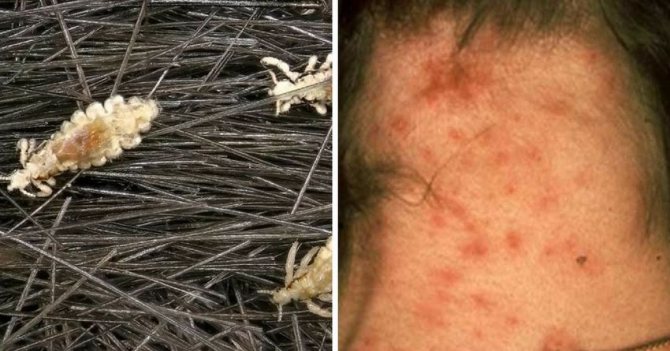

Lice bite on the skin
Lice are usually found on the head, but some species can also be found on other hairy parts of the body. Apart from the unbearable itching they cause, their bites leave small red dots.
Blind
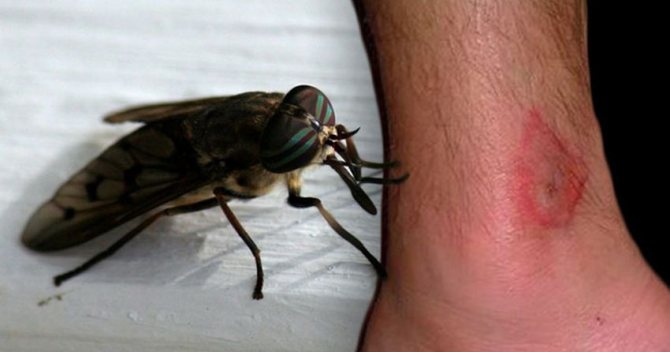

Horsefly bite on the skin
The horsefly has such an unpleasant bite that you will definitely notice it. A large mark remains on the skin, near which there is swelling, which periodically becomes hot. This painful bite can cause itching, dizziness, and in some cases even become infected.
Bedbugs
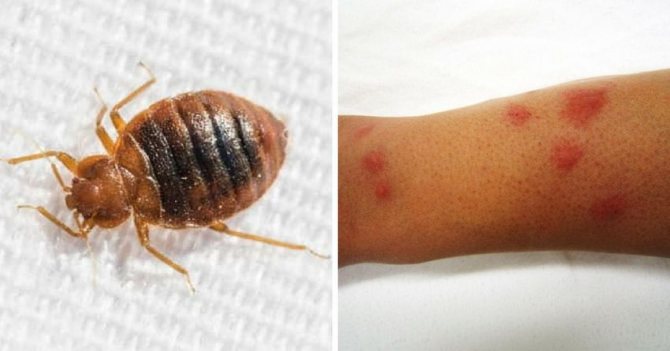

Bug bite on the skin
The main difference is massive, tightly spaced and grouped bites. Bed bug bites are usually in a single line. The number of bites of one bug is also typical - 3-5 punctures of the skin and redness at a distance of 2-4 centimeters from each other.
Gold-eyed, or speckled
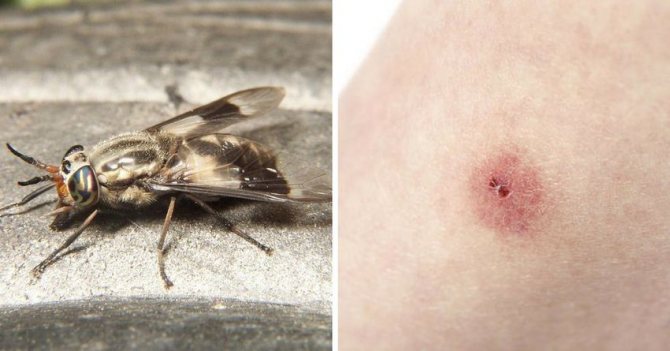

Lacewing bite on the skin
If you are bitten by one of these flies, you will immediately feel it. Their bites are extremely painful and leave red patches.
Laceworms can transmit a disease known as rabbit fever. If you experience skin ulcers, fever, or headache after being bitten, see your doctor immediately.
Hermit spider
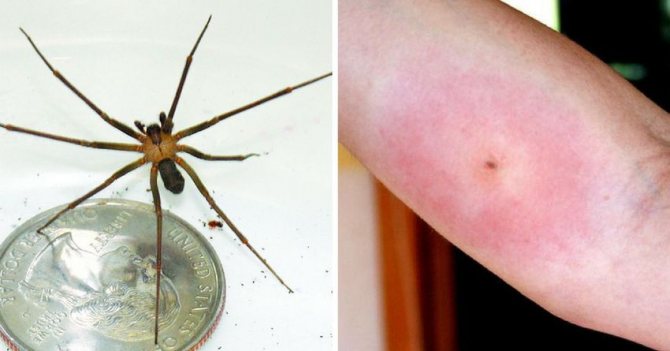

Hermit Spider Bite on Skin
The hermit spider only lives in certain regions and you are unlikely to be bitten by it. But for general development, know that you will only feel the hermit bite after 6 hours, and then it will be very painful. It will cause redness or a purple ring on the skin, similar to a bull's eye.
Bees: 1.0
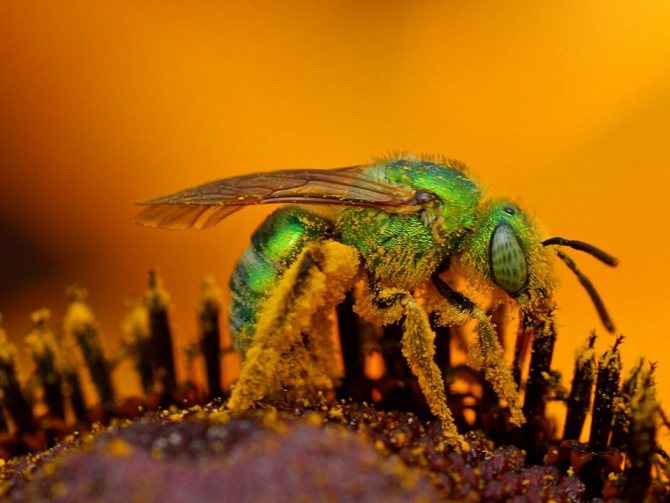

0
See all photos in the gallery
Bees are a large family of medium-sized Apidae bees that can be colored black, metallic, defiant yellow, or even sparkling green. They are the most common bees in most parts of the world, with the exception of Australia. They have the unique ability to trap salt in human sweat, so it's best not to sweat around these insects. According to the Schmidt Index, a bee sting is almost painless, like getting a faint spark from a Bengal fire on your hand.
Lice
Lice are of several types - head, clothing, pubic. The latter are similar to a small crab, localized on the pubis, are rare - in people leading a depraved lifestyle, homeless people. Clothes live in a person's underwear, bedding, and bite more often at night. After insect bites, numerous small red spots appear, minor swelling. Head lice attack children more often. They live on the head. They are the most common parasite.
Measures must be taken immediately, as insects multiply rapidly. They use folk, professional remedies.In the absence of pediculosis therapy, dermatitis develops, a disorder of the nervous system, and a deterioration in general well-being.
- severe itching;
- spots on the skin, inflammation;
- dermatitis from bites with prolonged infection;
- the presence of nits on the hair.
Tarantula Hawk: 4.0
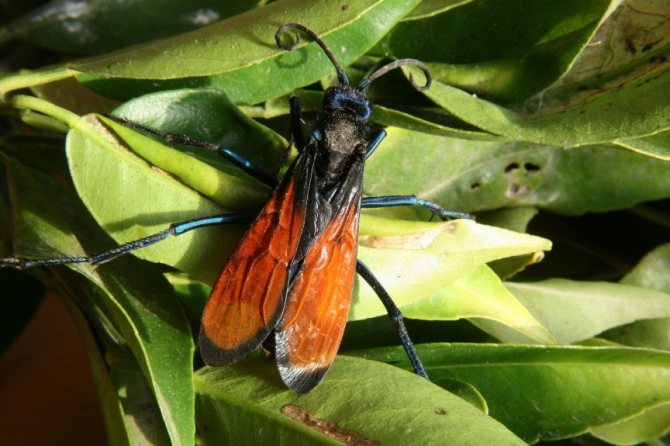

0
The tarantula hawk is a fierce wasp that feeds on tarantulas. This is one of the most dangerous insects that you are unlikely to want to face. This wasp has a bluish-black body with brightly colored wings, although there are varieties with black and blue wings. The tarantula hawk has long legs with hooked hooks at the end, which helps them to grip their prey tightly and sting it with one of the most painful stings in the world. The Schmidt Index describes the sting of the tarantula hawk as disgustingly electric, brutal, and blinding. The bite can cause anyone to roll on the floor screaming in pain. The bite pain index is 4.0 points.
Wasp: 2.0
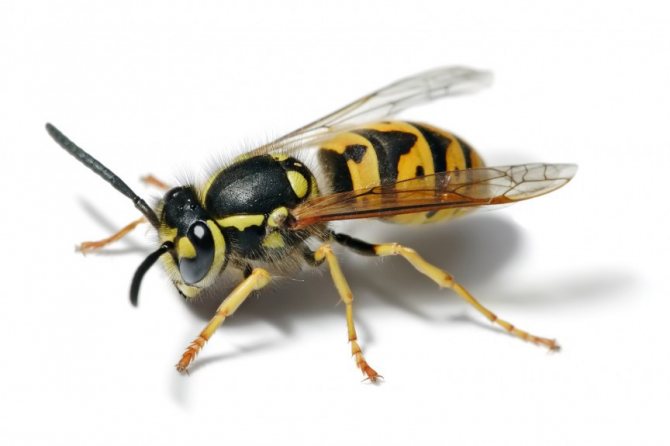

0
The wasp protects its nest with maximum aggression. The main difference between a bee and a wasp is that wasps have a thinner waist, longitudinally folded wings and a distinct black and yellow color. Despite the troubles that people living nearby, this wasp is also useful because it eats other insects. Schmidt describes the sting of a wasp as smoky and hot, almost comparable to the contact of a cigarette with your tongue. The pain index for a wasp sting is 2.0.
Paper wasps: 3.0
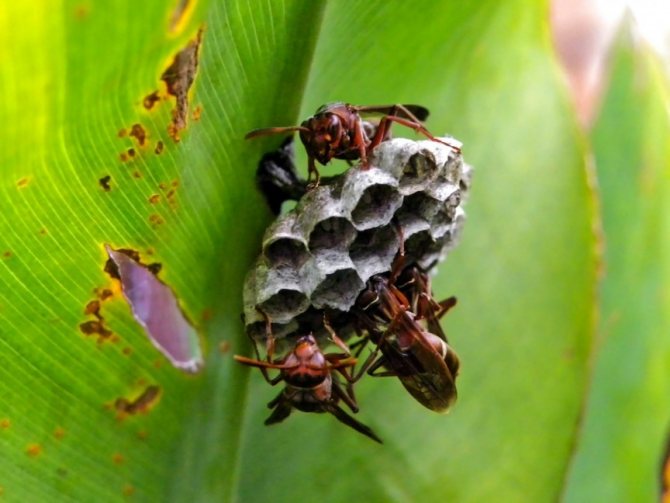

0
The paper wasp belongs to the genus Polistes, which consists of no less than 200 different wasp species. These wasps have dark brown bodies with yellow markings. The paper wasp gets its name from the fact that it builds its nests from saliva, converting plant material into paper. In addition, these wasps do not build an outer cover for their water-resistant umbrella-like nests. They are not as aggressive as the other wasps on the list, but the first sign of threat will cause them to attack. Schmidt describes a wasp sting in comparison to hydrochloric acid poured onto a cut. The paper wasp sting pain index reaches 3.0 points.
Acacia ants: 1.8
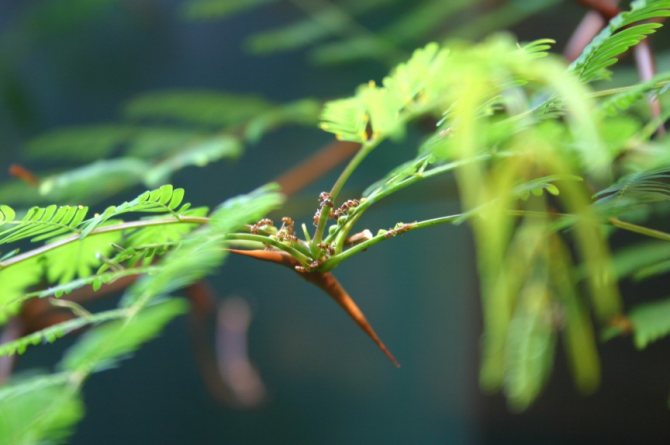

0
These ants belong to the genus pseudomyrmex ferruginea, and have a symbiotic relationship with the portable megaphone acacia. The tree provides food and shelter for these ants, while the ants protect the acacia from herbivores and other pests. These ants are somewhat reminiscent of a wasp, with large eyes and an orange-brown body. Schmidt describes the sting of this ant as rather painful, with a sharp penetrating pain. The Schmidt pain index is 1.8 points.
Who to be afraid of
Insect bites are not always dangerous, watch out for:
- Hymenoptera: bees, wasps, hornets, horseflies.
- Arachnids: tarantulas, scorpions.
- Scaly reptiles: snakes.
- Blood-sucking insects: ticks, bedbugs, flies, midges, fleas.
If, when a bee or a wasp sting penetrates, a person remains alive, then the venom of spiders and snakes without the introduction of a monospecific or polyspecific antiserum can lead to death in 20-30 minutes.
With individual intolerance or an increased tendency to allergic reactions, even an ordinary wasp can pose a great threat to humans.
First aid to the victim
If a person has been attacked by some kind of insect, then in some cases special attention is not required. But when a severe reaction of the body to a bite appears, the victim must be given first aid.
First of all, you need to understand which insect has bitten.
Bitten people should never:
- Drink alcoholic beverages;
- Smoke;
- Move a lot.
Avoid contact of the affected area with anything warm. All of the above only promotes the absorption of toxins and allergens into the bloodstream.
The correct way to minimize damage to an insect attack is to wash the wound, treat it with an antiseptic. After that, a pressure bandage and ice should be applied to the affected area.This leads to constriction of blood vessels, as a result of which toxins will spread more slowly throughout the body.
The victim should take antihistamines.
If the condition of the bitten person worsens, this indicates that the bite was poisonous or the victim develops an allergic reaction. In any case, he must be taken to the nearest medical facility.
It is worth noting that the reaction of children or animals may differ from that of an adult. The child's body reacts more sharply to the bite, but they have allergies less often. Pets have their own relationship with insects. In dogs, ticks can present infections that humans do not. Parasites - bugs and fleas - also annoy animals.
The best is prevention. Apartments or houses where parasites have settled should be treated with special means. You need to monitor the condition of your pets. When traveling to another country, it is better to find out in advance which animals and insects of those regions can pose a threat to human health.

